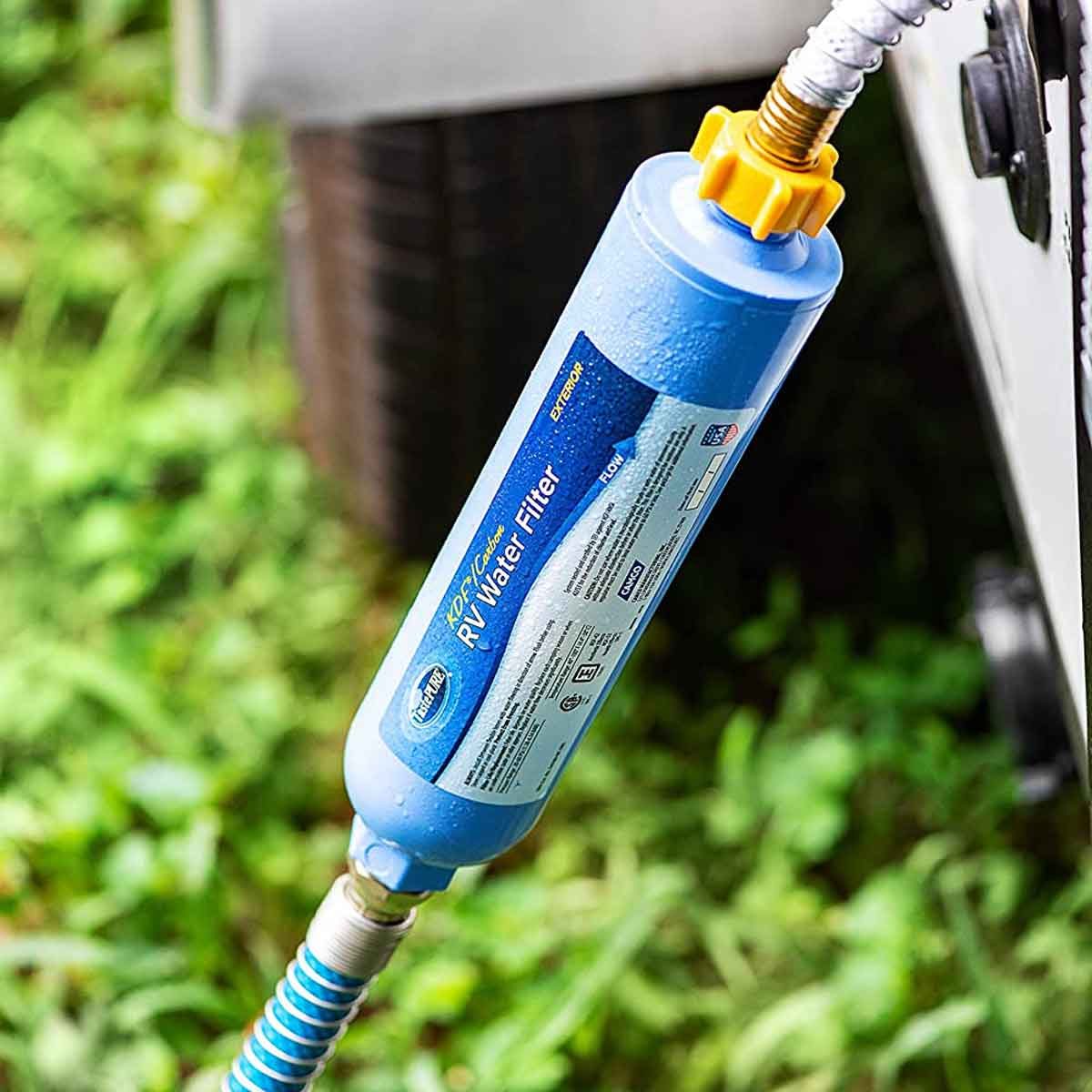If you own and regularly use an RV with its own water system, understanding RV water filtration is essential.
Water piped from campgrounds directly into your RV’s taps and shower can be smelly and full of contaminants. While drinking and using this water may not make you sick, it will definitely lower the quality of your road trip experience and make using water in your RV something you dread. Whether it’s water filtration for camping or road trips, figuring this out beforehand is essential.
What Is RV Water Filtration?
Like household water filtration, RV water filtration removes chemicals, odors and unwanted sediment from water before it comes out of your taps or shower. This can be done by any one of several filter types. Some RVs with water systems come with a simple filter. Trouble is, these aren’t usually as effective as after-market filters. These are your options:
Inline Filter: The most basic. These attach to the hose leading to your RV’s water tank, filtering all incoming water. Since these aren’t the most effective RV water filters, they’re typically recommended for occasional RVers only.
Reverse Osmosis Filter: These filter all water used in an RV (not just drinking water) and give purer results than other filter types. They offer the best combination of sediment, odor and chemical removal, but they’re also the most expensive.
Standard Canister Filter: This type of RV water filter forces incoming water through one or more canisters designed to catch and hold sediment and contaminants. One advantage is customizability; it can handle one or multiple filter housings fitted with different types of internal filter cartridges. The only complaint some RVers have with these filters is that sometimes they slow down the flow rate.
Jumbo Canisters Filter: Including all the features of standard canister filters, these offer better flow rate. And because of the larger size and greater surface area of their internal filter cartridges, the cartridges don’t need to be replaced as often. Standard canister filters are usually best for part-time RVer’s, while jumbo canisters systems are for serious trekkers.
What Are Pressure Regulators?
Regardless of the filter type you choose, make sure you invest in a water pressure regulator. Meant to keep water pressure at a specific PSI level (pounds per square inch), these devices keep the water lines in your RV safe.
Most RV water systems aren’t meant to deal with pressure greater than 100 PSI or so, even though this is a common pressure for hookups to city water. That’s where pressure regulators can help. They intercept incoming water and keep it at a safe and functional pressure (usually 60 to 85 PSI), preventing your RV’s pipes from bursting.
RV Water Filter Maintenance
All RV filters must be checked and serviced regularly. Exactly when depends on your situation, including filter type, water usage and purity and travel habits.
If in doubt, it’s always better to change them too early rather than too late. Keep replacement filters or filter cartridges on hand at all times during RV season, and inspect your filter at least once a week during heavy use. If the cartridge looks dirty, it’s best and safest to change it.
Regardless of the filter, you’ll make filter and water system maintenance a whole lot easier by installing a shut-off valve on the main water intake line before it reaches the filter. This allows you to stop water flow whenever you need to change your filter or any other part of the system without a mess. Be sure to install a bypass system as well, so you can continue to use unfiltered water if your filter breaks and you don’t have a replacement on hand.
The shut-off valve comes in handy for winterizing the RV, too, because it allows you to stop water from flowing into the pipes while you drain what’s already there. With all the pipes empty, don’t forget to open and empty your RV’s water filter, too.
Want to store your RV heater? Here’s how to drain your RV water heater to make sure it operates safely and efficiently. Learn where to store your RV for the winter.
ⓘ





















